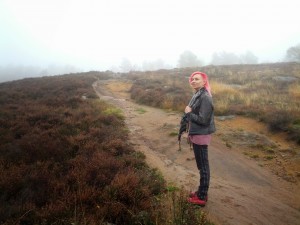Back in October I visited my friend Louise in Sweden. While I was there, I read her book Swenglish (which I was supposed to have read before the trip, but many things had got in the way).
The idea for Swenglish was an interesting one. Lou was coming up to her 30th birthday. She’d achieved her ambitions and wasn’t sure what to do next. She had to either change things by moving back to Sweden, or commit to being English. She came up with a novel way to investigate the two options.
Lou wrote to 120 people, some English and some Swedish. The time she’d been away from Sweden meant that many of the Swedish ones were older friends spread about the country. The English friends were centred on Brighton, including a lot of mutual acquaintances. She then chose fifteen English people and fifteen Swedish, spending a week shadowing each of them and writing about the experience.
(I was one of the people approached initially but didn’t make the final list. Louise was worried that I would be too interested in asking questions about the underlying project. She was probably better off not including me, as I’d already started preparing a serious of bizarre incidents to occur while she was shadowing me)
As a portrait of two countries the book is interesting enough. The Swedish find the English habit of carpeting toilets to be disgusting. And, despite Sweden having colder temperatures, Sweden is warmer than England, since our houses tend to be draughty and badly insulated. However, the thing I like most was the way the book sketched its characters.
Back when I was in Umi Sinha‘s classes, she told us an important rule for critiquing people’s work. Even if a piece is written in the first person, you shouldn’t talk about the actions “you” did, maintaining a separation between the narrator and the author. In a book like this, where the characters are so tied to real people there is a similar separation. The ‘characters’ are Lou’s view of people, distorted by what she brought to the experience and what she was looking for. At least one was unhappy with their portrayal but I felt that the portraits were positive and well-intentioned. I can’t speak for how these people should or did feel, but I felt a compassion towards each of Louise’s portrayals.
For me, the book was one about choice. Several portraits focussed on decisions that the subjects had made. Others had not made a choice, seeming to endure. Reading about thirty lives in quick succession made me think about my own choices, both those I was making and the ones I was ignoring. Interestingly, few people regretted their decisions, even when they involved a massive change.
A good book produces some sort of change in the reader. After reading Swenglish I’ve taken time to think about the choices in my life (including seriously considering moving to Sweden in the next year). Louise is planning to self-publish this in early 2015, with a launch in Brighton, and I’m looking forward to more people getting a chance to read it.



3 thoughts on “Swenglish”